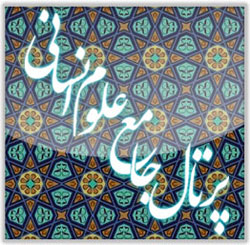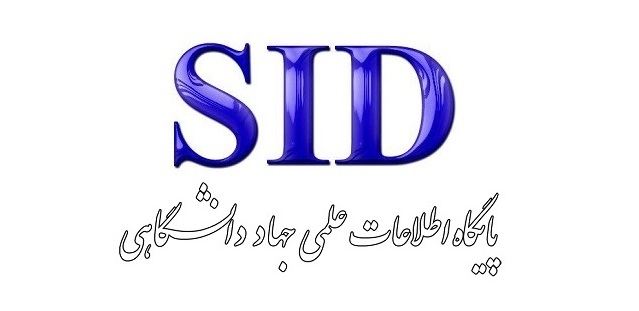Presenting a Narratological Model of Masnavi Ma’navi Based on the Temporal Element in Gérard Genette’s Narrative Theory
Keywords:
Narrative, Narratology, Element of Time, Spiritual Mathnawi, Gerard GenetAbstract
The function of the temporal element within the domain of narrative literature has consistently manifested itself from diverse perspectives and dimensions. In fact, telling or writing a narrative without the involvement of time appears to be impossible. According to Genette’s theory, when events are not narrated at the time of their occurrence or in their proper sequence, the chronological order of events within the story becomes disrupted in the narrative. Events that describe future occurrences and those that recount past incidents are referred to as prolepsis and analepsis, respectively. The present study aims to analyze the short and long narratives within Masnavi Ma’navi using Genette’s theory, which is considered one of the most contemporary theories concerning the elements of focalization and temporality in narrative structure. This study was conducted using a descriptive–analytical method. The findings indicate how Rumi, in Masnavi Ma’navi, skillfully and beautifully harnesses the literary-narrative capacities of the temporal element and focalization in crafting his stories, contributing to the timelessness of his work in the minds of readers. The narrative in Masnavi does not flow linearly; rather, it contains numerous disruptions that arise from various narrative factors. To recover from these disruptions and resume the narrative, Rumi employs unique techniques that reintegrate the listener into the flow and atmosphere of the interrupted story. These narrative return formulas in Masnavi are not only used when the narrator deviates from the main narrative due to interpretive digressions and intends to return, but also when elaborating on the setting or characters within the main story itself.
Downloads
References
1. Toolan MJ. A Critical-Linguistic Introduction to Narrative: Tehran: Farabi Cinema Foundation; 2007.
2. Eagleton T. An Introduction to Literary Theory: Tehran: Markaz; 1989.
3. Genette G. Narrative Discourse: Tehran: Mehrandish Publishing; 2019.
4. Bertens H. Foundations of Literary Theory: Tehran: Markaz; 2012.
5. Todorov T. Theory of Literature (Texts from Russian Formalists): Tehran: Akhtaran; 2009.
6. Akhavat A. Grammar of Storytelling: Isfahan: Farda; 1992.
7. Hurri A. Essays on Narrative Theory and Narratology: Tehran: Iran Book and Literature Institute; 2013.
8. Bamshaki S. Narratology of Masnavi Stories: Tehran: Hermes; 2014.
9. Ahmadi B. Structure and Interpretation of Text: Tehran: Nashr Markaz; 1993.
10. Ibn Manzur MiM. Lisan al-Arab: Beirut: Dar Sadir; 1990.
11. Zubaiydi MiM. Taj al-Arus min Jawahir al-Qamus: Beirut: Dar Maktabat al-Hayat.
12. Dehkhoda AA. Dehkhoda Dictionary: Tehran: University of Tehran; 1998.
13. Zamani K. Comprehensive Commentary on Masnavi: Tehran: Ettelaat Publishing; 2011.
14. Este'lami M. Introduction, Editing, and Commentary on Masnavi: Tehran: Zavvar Publishing; 2008.
15. Mashhoor P. Mystics in Masnavi: Tehran: Ahang-e Qalam Publishing; 2010.
16. Molavi Ja-D. Masnavi-e Ma'navi: Tehran: Behzad Publishing; 2005.
17. Fotouhi M, Culler J, Farzaneh T. Stylistics: Theories, Approaches, and Methods Literary Theory: Tehran: Sokhan Publishing Tehran: Markaz; 2009.
18. Molavi Ja-D. Masnavi-e Ma'navi, Commentary by Karim Zamani, First Volume: Tehran: Ettelaat Publishing; 2007.
19. Molavi Ja-D. Collected Masnavi-e Ma'navi: Tehran: Tolou Publishing; 2006.
20. Ricoeur P. Time and Narrative (Plot and Historical Narrative): Tehran: Gam No; 2018.
21. Hasanli K, Dehghani N. "Examining Narrative Speed in the Novel The Empty Place of Soluch.". Persian Language and Literature Quarterly. 2010(45).
22. Pournamdarian T. In the Shadow of the Sun: Tehran: Sokhan; 2001.
23. Tayeb Z. Virtues of Rumi: Tehran: Islamic Heritage Publishing; 2020.
Downloads
Published
Submitted
Revised
Accepted
Issue
Section
License
Copyright (c) 2025 میثم سلیمانی (نویسنده); فرزانه یوسف قنبری

This work is licensed under a Creative Commons Attribution-NonCommercial 4.0 International License.








